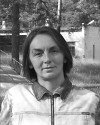



The modern science makes set of new hybrid objects (cyborgs, live artificial fabrics, network communities-virtual of a commune). These incomplete objects in the course of “meaning” formation face unconscious structures of values and relations between them. Unconsciousness already speaks, remaining not learned. It repeats as superdetermination (symptom) and unconscious repetition in process of constructing of new objects and subjects. In modern European culture there are two main types of unconscious structures. One accepts value of individual existence, and staking on pleasure principle, force a science to serve humanism, to do life more comfortable, immortal and painless. Other tradition is based on inequality of the subject to itself and demands permanent transformation of a reality by new Knowledge. The reality in this case represents operative system making the subject simultaneously with object manufacture. This tradition demands new scientific objects to perform the subject as dynamic process. Each of these traditions forces out another, as impossible and not true.
The nonclassical philosophy offers some theoretical tools to advance a solution of the problem. The true isn’t now ahead on a course of proofs, it could be found out by return thinking akin psychoanalysis and deconstruction. Practice of “return thinking” connects itself with opening unconscious by Freud and critics of ideology by Marx. Thus the ideology is dependent from unconscious, and unconscious is connected with horizon of history. We could say that Marxism and psychoanalysis started the theory of discursive differentiation, which is mainly important in the time of globalisation. Here we take theoretical technology to augment and transform our reality. That is why I will speak in terminology of nonclassical late soviet Marxism and Lacanian psychoanalysis.

Alla Mitrofanova (1959, St Petersburg, Russia) is a philosopher, art curator, theorist of new-media arts. With a background of art history and philosophy from St Petersburg University, she focuses on the interactions between art and technology, as well as on trans-genre and contextual aesthetics. She has curated and co-curated exhibitions such as Individual body in the epoch of late totalitarianism (Museum of Modern Art, Mexico), Geopolitics (Museum of Ethnography, St Petersburg), 40 years of contemporary art (Expocenter, St Petersburg), etc. She was editor of Virtual Anatomy e-zine on media theory in 1996–98. Mitrofanova organizes interdisciplinary conferences and guest lectures at universities and international art academies. Her interest ranged from media theory, post-marxism, psychoanalysis to neurophysiology. In her current research she investigates the conception of semiotic chaos and technological art. Mitrofanova is also a co-founder of Media Gallery 21 (1994), Cyberfemin Club (1994), Philosophical cafe (2002) in St Petersburg. She published in n.paradoxa (intenational feminist art journal), Variantology 2 (Research on archaeology of the media, Cologne 2006) and catalogues. She is currently a moderator of Philosophical cafe in St Petersburg (Gallery of Experimental Sound Free Culture Foundation).